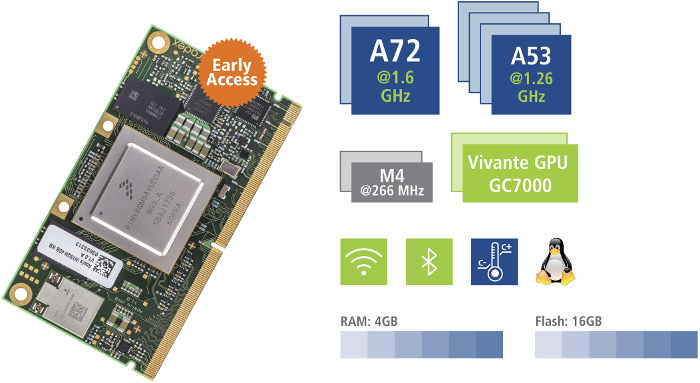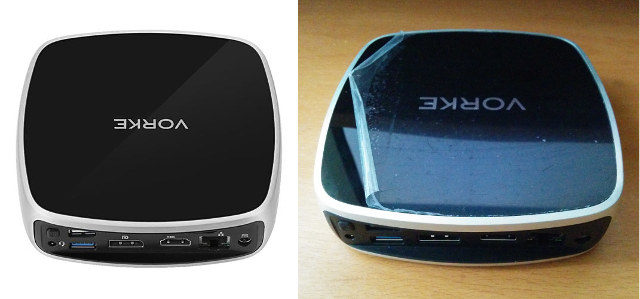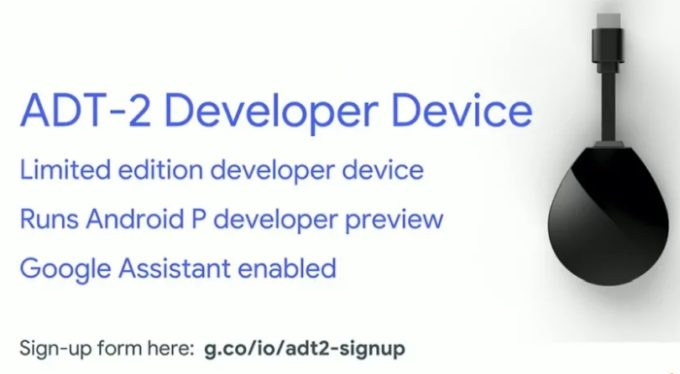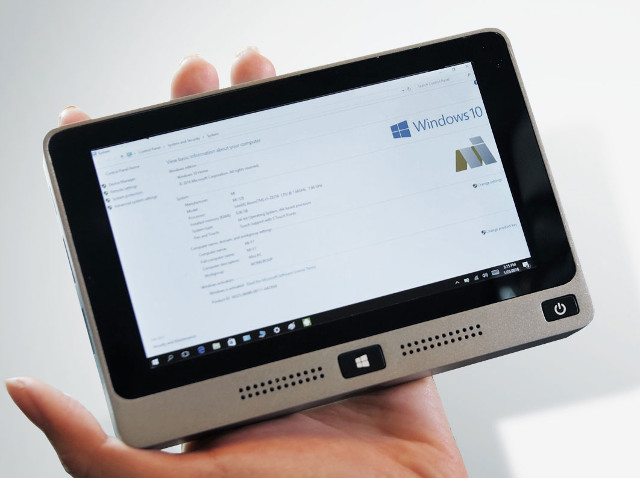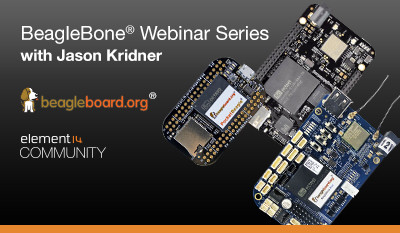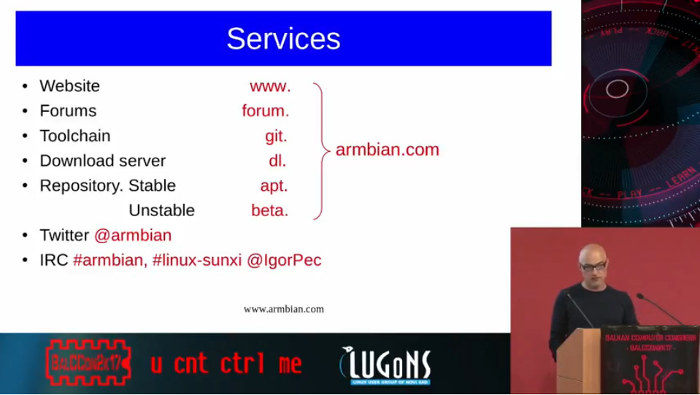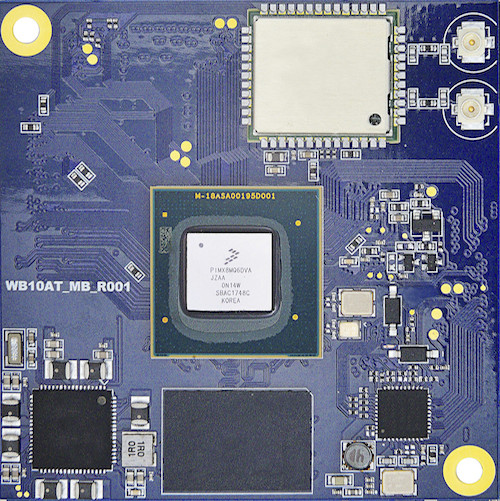Google has released the second developer preview of Wear OS by Google – previously known as Android Wear – that adds support for Actions on Google (AoG) and power-related enhancements among other features. The release can be run in the Android Emulator, and firmware images have also been made available for Huawei Watch 2 Bluetooth / Classic Bluetooth. Google Assistant can now support visual cards, follow-on suggestion chips, and text-to-speech on Wear OS, and developers can make use of Actions on Google. The feature does not depend on Android P, and all Wear 2.0 watch will support it. The Android P developer preview, also includes an enhanced battery saver mode during which the watch shows a power-efficient face, and turns off radios, the touch screen, and tilt to wake. Users can check the time by pressing the side button, and get back to normal mode with a long press. In […]
Toradex Launches Apalis iMX8 Computer-on-Module based on NXP i.MX 8QuadMax SoC
Toradex Apalis iMX8 is another system-on-module powered by NXP i.MX 8QuadMax hexa core Arm Cortex A72 + 53 processor, which comes with 4GB LPDDR4 RAM, up to 16GB flash, and an on-board dual-band 802.11ac 2×2 MU-MIMO Wi-Fi and Bluetooth 5 ready module. The company has just opened early access for selected customers, so it has become possible to start developing products with the MXM3 computer-on-module. Apalix i.MX8 module specifications: SoC – NXP i.MX 8QuadMax hexa core processor with 2x Arm Cortex-A72 cores @ 1.6 GHz, 4x Arm Cortex-A53 cores @ 1.26 GHz, 2x Cortex-M4 real-time core @ 266 MHz, and dual Vivante GC7000XSVX GPU System Memory – 4GB LPDDR4 (64 Bit) Storage – Up to 16GB eMMC flash On-module Connectivity Gigabit Ethernet via Microchip KSZ9031 transceiver with low power features Dual-band 802.11ac 2×2 MU-MIMO Wi-Fi and Bluetooth 5 via Azurewave AW-CM276NF M.2 1216 LGA module Audio – NXP SGTL5000 low […]
Vorke V5 Plus Kaby Lake Mini PC Review with Windows 10 and Ubuntu 18.04
The Vorke V5 Plus mini PC just goes to show how initial impressions can be very misleading. Arriving in a plain manila-coloured box with the protection film on the top of the device starting to peal-off the minimalist contents only included a round-pin (European?) power supply and a small B&W ‘user’ manual. The mini PC has an Intel Celeron Processor 3865U from the Kaby Lake mobile range which is a dual-core (dual-thread) non-turbo 1.8GHz processor. However this SoC also includes an Intel HD Graphics 610 processor capable of 4K support at 60Hz through DisplayPort, although only 4K@24Hz on HDMI (1.4). Additionally the SoC supports DDR4 RAM in dual-channel configuration. The V5 Plus model which comes with both memory and storage although it is sold without them as a barebones V5 model. Physically the V5 looks similar to a NUC and the pre-populated V5 Plus included a single SODIMM stick of […]
Google ADT-2 is an Android TV Dongle for Developers
You may remember we covered a “4K ATV Stick” last month, as a mostly unknown manufacturer (Shenzhen SEI Robotics) applied for FCC certification, with the device featuring a large G marking, leading some to speculate it may be an upcoming Google device. At the time, I dismissed it, and believed if was just another Chinese “Android TV” or “Android” TV device, but Google has now released a similar looking Android device which probably means I was wrong… It’s not a consumer device however, and after Google ADT-1 Android TV developer kit launched in 2014, Google has now unveiled ADT-2 developer device that runs Android P developer preview with Google Assistant. ADT-2 OTT HDMI stick specifications: SoC- Amlogic S905X quad core Cortex A53 processor with Arm Mali-450MP GPU System Memory – 2GB RAM Storage – 8GB eMMC flash Video & Audio Output – HDMI 2.0a with HDCP 2.2 support Video Decoding […]
Mi Mini PC is a $150 Pocket-Sized Windows 10 Mobile PC with a 5″ Touchscreen Display (Crowdfunding)
Around 2 years ago, I reviewed GOLE1 mini PC running Windows 10 and Android 5.1, powered by an Intel Atom x5-Z8300 Cherry Trail processor with 4GB RAM and 64GB SSD. It also came with a 5″ 1280×720 display and a battery, so you could use it on the go. I discovered several issues related to WiFi, USB 3.0, Windows 10 on a 5″ display, among others, but still found it was an interesting concept. Mi Mini PC – unrelated to Xiaomi Mi products – looks very similar to GOLE1, but comes with better specifications including an Atom x7 processor, 8GB RAM, and a 128GB SSD. Mi Mini PC specifications: SoC – Intel Atom x7-Z8750 quad core Cherry Trail processor @ 1.60 / 2.56 GHz with 16EU Intel HD Graphics; 2W SDP System Memory – 8 GB RAM Storage – 128 GB SSD (upgradeable to 256 or 512 GB) + micro […]
A 6-Part BeagleBone Webinar for Users, Developers and Education Starts on May 10
The BeagleBone Black and derivatives like PocketBeagle or BeagleBone Green Wireless are still popular development boards, and if you are interested in the platform as a developer, user, or educator, you may learn more about the boards and how to use them in an upcoming BeagleBone webinar series presented by Jason Kridner, the co-founder and board member at BeagleBoard.org Foundation, and element14. The webinar series will start in about 2 weeks with the following schedule: Introduction to BeagleBone – 10th May 2018 @ 11:00 AM (CDT)/17:00 (GMT) BeagleBone for Linux Users – 24th May 2018 @ 11:00 AM (CDT)/17:00 (GMT) BeagleBone for Embedded Developers – 6th June 2018 @ 11:00 AM (CDT)/17:00 (GMT) BeagleBone for Web Developers – 21th June 2018 @ 11:00 AM (CDT)/17:00 (GMT) BeagleBone Blue for Robotics – 12th July 2018 @ 11:00 AM (CDT)/17:00 (GMT) BeagleBone in the Classroom – 26th July 2018 @ 11:00 AM […]
Armbian History, Infrastructure, and Progress Report
Many of us rely on Armbian Debian and Ubuntu images for our cheap Arm development boards since they usually offer better support than vendor supplied firmware images. The community has just updated Armbian website, but the thing that caught my eye in the announcement was a link to a 45-minute presentation by Igor Pečovnik, working full-time on the project, that details the history about Armbian, and provides a relatively recent progress update as it was made at BalCCon – Balkan Computer Congress in November 2017. I’ve embedded the video further below, but first I’ll provide summary of the key point made during the presentation. It all started with Cubieboard (A20) as Igor was trying to fix some issues, and learn how to improve software support on the board. Several people joined his efforts on Cubieboard forums, and eventually Armbian website launched in mid 2014 running on the Cubieboard then ODROID-XU4 […]
Android Things 1.0 Released with Support for NXP i.MX 8M, Qualcomm SDA212/SDA624 and Mediatek MT8516 SoMs
Brillo Project was renamed to Android Things with the release of a developer preview back in December 2014, and the operating system enabling developers and companies to build and maintain Internet of Things devices at scale. The OS has now graduated so-to-speak with the release of Android Things 1.0 with long-term support for production devices, and this was to be expected as several Android Things devices were announced earlier this year. The new release adds supports for new system-on-modules (SoMs) based on the NXP i.MX8M, Qualcomm SDA212, Qualcomm SDA624, and MediaTek MT8516 SoCs. These modules are certified for production use with guaranteed long-term support for 3 years, and development hardware and reference designs for these SoMs will be available in the coming months. The Raspberry Pi 3 Model B and NXP i.MX7D boards and system-on-modules are still supported, but support for NXP i.MX6UL devices will be deprecated. Check out the […]



